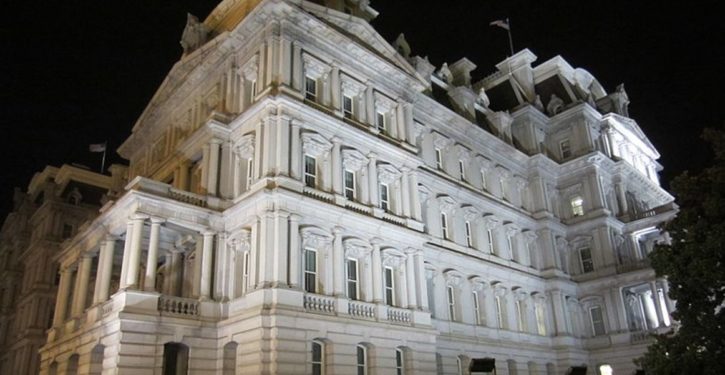
In light of Liberty Unyielding saddling up to ride off into the sunset today, I’ve been working on a final “timeline” article that assembles some general-theory thoughts about where John Durham’s indictment of Michael Sussmann, and Sussmann’s key connection with the Alfa Bank subplot in Spygate/Russiagate, fit into the whole picture.
As often happens, time and subsequent thought have clarified for me that (a) this isn’t going to be completed in the next three hours (i.e., before the end of 3 October 2021 on the East coast), and (b) posting it as a farewell article is probably not the best approach anyway.
Instead, the lengthy article itself will appear as the first feature since December 2015 at my old blog, the Optimistic Conservative. (I will, however, add a Web Crawler headline for it at LU once it’s gone to post. As noted in our farewell to readers this past week, the LU archive will remain live for the foreseeable future, although comments will close out in a few days.)
Will this presidential election be the most important in American history?
The purpose of this present article is to offer a much-abbreviated preview of the longer one to come.
LU published several articles in September after the Sussmann indictment was announced; see here, here, and here
My principal assessment from a survey of current and past analyses, including my own, is that the Sussmann indictment, which functions as a sort of “Durham report” to date in laying out the potential elements of a conspiracy, effectively fingers the Alfa Bank subplot as an intentional conspiracy, and suggests it’s the key to unwinding the whole ball of string.
The timing of three core events in the Alfa Bank plotline, in 2016 and 2017, reinforces this deduction. There is also a connection with a much more recent event.
The recent event is the eye-catching shift of millions of IP addresses from control by the Pentagon to a tiny, no-background company in Boca Raton, on 20 January 2021, three minutes before Trump’s term ended. Those same IP addresses shifted from the Florida company back to the Pentagon on 7 September 2021, shortly before Durham’s indictment of Michael Sussmann was filed.
The connection with the Alfa Bank subplot is through people, not through cyber evidence or other collateral clues. The proprietor of the small Florida company, Raymond Saulino of Global Resource Systems, LLC, is a long-time associate of a tech expert – Robert Joffe – who is probably “Tech Executive-1” from the Sussmann indictment. (Sussmann represented Joffe during the timeframe covered by the indictment.)
Indeed, Joffe was interviewed by media about Saulino back in April 2021, when the mainstream media became aware of the IP address shift in January.
But it appears to me that the IP address shift itself is relevant to the parade of facts, connections, and methods that make up the working story of Spygate and Russiagate. I can’t tell how much Durham already sees, but it looks likely to me that, as Durham’s work unfolds, we haven’t seen the last of the Pentagon IP addresses. Their exploitation is a method, as an opportunity in cyberspace, that hasn’t previously been considered in the general-public treatments of Spygate, as they relate to Trump and his associates, the 2016 election, Russia, Hillary Clinton, or any other element.
If there was a group of so-called “Concerned Nerds” (the going-in proposition of the Alfa Bank-Trump narrative, retailed by the media in 2016), and they included both Joffe and Saulino, we can bet that the Concerned Nerds were well aware of the situation of the Pentagon IP addresses in 2016. Someone they were doing work for probably was as well. More on that in the article to come.
As for the core events in the Alfa Bank timeline, they occurred in March 2016, May 2016, and February-March 2017. The remarkable interest of each of these passages lies in their overlay with the other things going on in Spygate/Russiagate.
What becomes clear with the overlay and the hindsight is that none of this could have been a coincidence. Here’s an excerpt from the article:
[T]he top actors in this “problem set” were not working in a vacuum, or in information stovepipes. People like Hillary Clinton, the circle of advisers she had in common with Barack Obama, Obama himself, and several of his senior officials such as John Brennan, Loretta Lynch, James Comey, and Susan Rice, could not have been in ignorance of the different things that were going on at the same exact time.
Those different things include the Alfa Bank subplot. The Sussmann indictment is about events that occurred mostly between May and October 2016, but we know of one in March 2016 that took place on what may be the most arresting date of all – even though it was seemingly coincidental, although not unimportant, in the “Alfa Bank-Trump” server timeline.
Close followers of the Alfa Bank drama will recognize 4 May 2016 as the day the supposedly “suspicious” server contacts – apparent DNS lookups – began between the Alfa Bank server and a server contracted by the event-promotion company Cendyn, which had had the Trump Hotels as a client. We look at that timeframe as well, because it is loaded with the freight of Spygate/Russiagate decision-making and actions by the principals.
Lesser known, but equally important, is the period February-March 2017, when the Sussmann indictment refers to a few contacts between Sussmann and federal agencies, and follow-on reporting has highlighted collaboration between continuing actors like Jake Sullivan and Daniel Jones as the Trump term got underway.
But the server exchanges of mid-2016 (which had ended in September 2016) were briefly revived in exactly that period, according to a court filing by Alfa Bank in Pennsylvania (where the Cendyn-contracted server was located) in June 2020. And for intensity of interest, the Sussmann-related events, and even the activities of Sullivan and Jones, only scratch the surface. The other things being done by James Comey, for example, and individuals on Capitol Hill, show that at the time of the three mass flurries of server contacts recounted in the Alfa Bank court filing, there was apparently a major decision-making and planning effort underway for a new phase of Spygate.
As I will argue in the article, “coincidences are exactly what cue law enforcement to investigate the hypothesis of a conspiracy. The material events of a conspiracy are rarely the first things identified as a conspiracy. It’s common motives, common timing, and common knowledge, often perceived at first as circumstantial, that cause investigators to suspect a conspiracy.”
Looking for patterns in “coincidences” is the essence of analysis. The probability of conspiracy is also escalated by the need for it, in the known context: “[T]he Hillary campaign per se did only some of the work for this common enterprise [i.e., Spygate/Russiagate]. A great deal of it was done by agencies of the federal executive, from Susan Rice and her ‘unmasking’ spreadsheets and Brennan and his ‘foreign intelligence,’ to the DOJ/FBI honchoing a surveillance effort falsely purported as legitimate (and thus inspectable and potentially usable before the public), and assets of the Pentagon (NSA, the Office of Net Assessment) being used to target and exploit persons in Trump’s orbit – in ways that were much less inspectable or potentially usable.”
The forthcoming article argues that, “in light of the increasing obviousness of a common enterprise, it is less and less possible that coincidences in a timeline are mere coincidences.” The moving parts weren’t moving without a guiding hand and a unified purpose.
The Alfa Bank subplot looks less and less like it was an exploitation (by Hillary and the DNC) of a coincidence involving DNS lookups between servers. It looks more, in fact, like something concocted by planners, at the same time other elements of Spygate were being concocted.
The Pentagon IP addresses, in hindsight, might have served in 2016 as a method of work in the common enterprise, like the actions undertaken through other federal agencies – not directly by the Hillary campaign – mentioned above.
I look forward to interested readers joining me at the Optimistic Conservative for the full-length discussion, which should be posted by Tuesday 5 October at the latest. Until then, farewell and Godspeed from the Liberty Unyielding outpost.
Let freedom ring.




